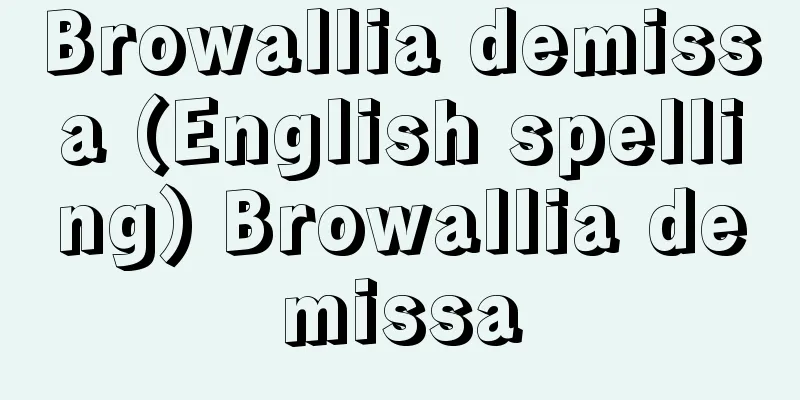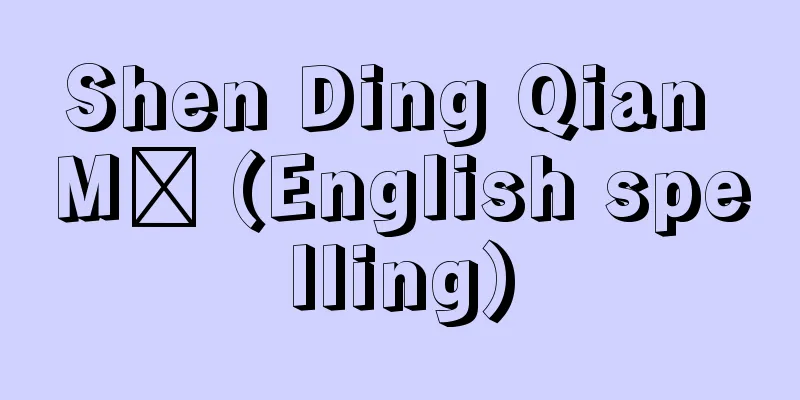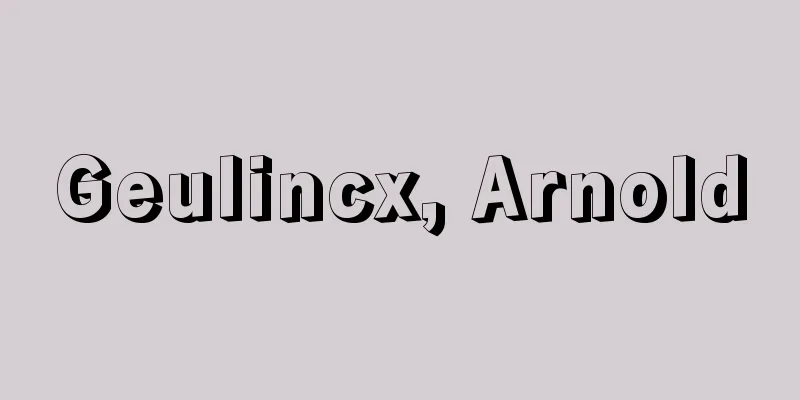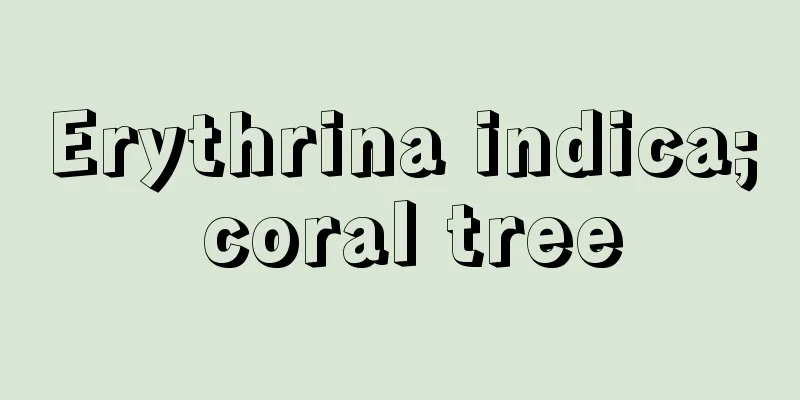arrhythmia
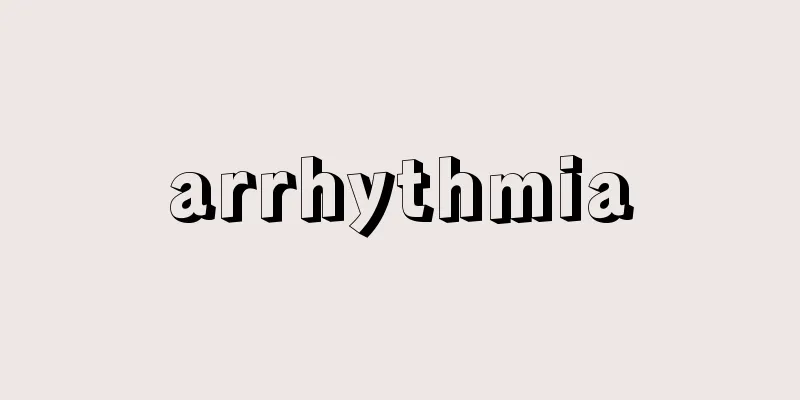
|
What kind of disease is it? Main symptoms and progression The heart contracts and expands at a constant rhythm to pump blood throughout the body. When this rhythm becomes disrupted for some reason, it is called arrhythmia. Arrhythmias can be divided into those in which the pulse is interrupted or suddenly accelerated (premature ventricular contractions), those in which the rhythm is maintained but the pulse speeds up (tachycardia), and those in which the pulse speeds down (bradycardia). Typical symptoms include fainting, dizziness, palpitations, fatigue, and difficulty breathing. However, there are also arrhythmias that are asymptomatic and can only be detected by abnormalities in electrocardiogram tests. There are arrhythmias that will not have a significant impact if left untreated, and arrhythmias that can be life-threatening if treatment is not started immediately, so it is very important to determine the need for treatment. ●Causes of the disease and how symptoms occur Premature ventricular contractions can be caused by ischemic diseases such as myocardial infarction, but they can also be caused by alcohol, smoking, overwork, etc. Tachyarrhythmia, which causes the heart to beat faster, can occur when the electrical conduction (transmission of the heart's rhythm) needed for beating is transmitted not only through the normal pathway but also through an alternative pathway (paroxysmal supraventricular tachycardia), or when diseases such as valvular heart disease or high blood pressure put strain on the atria, causing them to tremble finely, resulting in tachycardia (atrial fibrillation and atrial flutter, etc.). Bradyarrhythmia, which slows the rhythm of the heartbeat, can be caused by disorders of the small tissue called the sinus node, which is located at the junction of the right atrium and the superior vena cava, and its surrounding areas (sick sinus syndrome).In addition, there is another type caused by disorders of the atrioventricular node, which is located between the atrium and ventricle (atrioventricular block). ●Characteristics of the disease Arrhythmia has been increasing in recent years, and the mortality rate due to arrhythmia has also been on the rise. EBM checks on common treatments and care [Treatment and care] Determine whether the arrhythmia requires treatment [Evaluation] ☆☆ [Evaluation Points] There are various types of arrhythmia, and whether or not treatment is necessary varies depending on the type. Therefore, it is important to find out what type of arrhythmia it is. This is supported by expert opinion and experience. Tests include 12-lead ECG, Holter ECG, stress ECG, and cardiac electrophysiology testing. Cardiac electrophysiology testing is especially recommended for patients with dizziness or fainting. [Treatment and care] Drug therapy is tailored to the type of arrhythmia. [Rating] ☆☆☆☆☆ [Evaluation Points] Highly reliable clinical studies have confirmed that arrhythmia symptoms can be improved with drug treatment. It is important to select the right drug for the type of arrhythmia that is causing the arrhythmia. (1) [Treatment and care] Stopping arrhythmia with a defibrillator [Rating] ☆☆☆☆☆ [Evaluation Points] Ventricular arrhythmias such as ventricular fibrillation can be stopped with a defibrillator. Since attacks can lead directly to sudden death, implantable cardioverter defibrillators are recommended in cases where ventricular fibrillation has been confirmed on an electrocardiogram, there is ventricular tachycardia presenting symptoms such as dizziness, fainting, or low blood pressure, and patients with underlying diseases such as dilated cardiomyopathy and significantly reduced cardiac function experience fainting thought to be caused by arrhythmia. Highly reliable large-scale clinical studies have demonstrated that implantable cardioverter defibrillators are superior to drug therapy. (2) [Treatment and care] Supporting a low pulse rate with a pacemaker [Rating] ☆☆☆☆☆ [Evaluation Points] Highly reliable clinical studies have confirmed that pacemakers are effective for bradyarrhythmia. Bradyarrhythmia here refers to atrioventricular block with symptoms, sick sinus syndrome, bradyarrhythmia with symptoms such as dizziness, and other atrial fibrillation with symptoms. (3) [Treatment and care] Correcting the mismatch between the left and right ventricles with a pacemaker [Rating] ☆☆☆ [Evaluation Points] When the function of the heart declines significantly, the electrical conduction required for beating does not work properly, and this can lead to a mismatch in the timing of the beating of the left and right ventricles. For such patients, cardiac resynchronization therapy is recommended, in which a pacemaker is implanted to correct the mismatch in the timing of the beating. As such patients may develop dangerous ventricular arrhythmias, it is recommended that a medical device that also functions as an implantable cardioverter defibrillator be implanted. Clinical studies have shown that in arrhythmias in patients with moderate to severe chronic heart failure, this treatment prevents the worsening of heart failure and improves prognosis. (4) [Treatment and care] If there is underlying heart disease, treat it. [Rating] ☆☆ [Evaluation points] When the coronary arteries, which supply oxygen and nutrients to the heart, narrow and blood does not flow sufficiently, or when the atria are burdened by valvular disease, an arrhythmia called atrial fibrillation can occur. In such patients, treating the underlying heart disease can improve the arrhythmia. Such treatments are supported by expert opinion and experience. [Treatment and care] Catheter ablation [Evaluation] ☆☆ [Evaluation Points] Research into the electrical conduction pathways that induce arrhythmias is progressing, and currently catheter ablation (myocardial ablation using a catheter) is being performed on many arrhythmias with the aim of correcting the conduction circuit. Ablation aims to improve arrhythmias by cauterizing conduction pathways that do not normally exist. It is said to have a particularly high cure rate for types of arrhythmias such as WPW syndrome (Wolf-Parkinson-White syndrome: a congenital disease in which extra conduction pathways exist), paroxysmal supraventricular tachycardia, and common paroxysmal atrial flutter. Currently, it is being performed on many arrhythmias, but the decision as to whether to perform it requires the judgment of an expert. (5)(6) [Treatment and care] Avoid excessive drinking [Rating] ☆☆☆ [Points to note] Clinical studies have shown that some types of arrhythmia can be aggravated by excessive drinking. For other health reasons, it is best to avoid excessive drinking. (7) [Treatment and care] Quit smoking [Rating] ☆☆☆☆☆ [Evaluation points] Smokers who quit smoking can reduce their risk of death from arrhythmia. This has been confirmed by highly reliable clinical studies. (8) [Treatment and care] Live a regular life to avoid sleep deprivation and overwork. [Rating] ☆☆ [Evaluation Points] Some arrhythmias are caused by lack of sleep or overwork. It is important to lead a regular, stress-free life. Although the effectiveness of this has not been confirmed by clinical research, it is supported by expert opinion and experience. Checking commonly used drugs with EBM Digitalis preparation [drug name] Digoxin (digoxin) [Rating] ☆☆ [Evaluation points] It is used to improve symptoms when atrial fibrillation causes tachycardia, but its effect on improving prognosis has not been confirmed. Calcium antagonist [diltiazem hydrochloride] (9) [Rating] ☆☆☆ [Drug name] Vasolan (Verapamil hydrochloride) (9) [Rating] ☆☆☆ [Evaluation Points] Clinical studies have confirmed that diltiazem hydrochloride is effective in lowering the pulse rate of supraventricular arrhythmias. Verapamil hydrochloride has been shown to have the same effect as diltiazem hydrochloride, and has also been shown to be effective in preventing the recurrence of tachycardia. Antiarrhythmic drugs [drug use] Below are the antiarrhythmic drugs that are often used on a daily basis. The metabolic pathways and effects differ for each drug, so the choice of which drug to choose must be determined by a specialist, taking into consideration the type of arrhythmia each patient has, the presence or absence of underlying illnesses, and any coexisting illnesses (kidney disease, liver disease, etc.). [Drug name] Xylocaine (lidocaine hydrochloride) (10)(11) [Rating] ★→ [Evaluation points] Lidocaine has been used frequently in clinical settings because of its fast-acting effect. However, when it comes to preventing ventricular fibrillation that occurs as a result of myocardial infarction, research has shown that although the incidence of the disease decreases, the mortality rate remains unchanged or may even increase, so its use is decreasing. [Drug name] Ankaron (amiodarone hydrochloride) (12) [Rating] ☆☆ [Evaluation points] It is used for ventricular tachycardia and ventricular fibrillation, and its usefulness as a secondary prevention has been confirmed in clinical studies. However, it has also been reported that it may cause pulmonary fibrosis and abnormalities in thyroid function. [Drug name] Bepricol (bepridil hydrochloride) (13) [Rating] ☆☆ [Evaluation points] Its effectiveness in terminating persistent atrial fibrillation has been confirmed. [Drug name] Mexitil (mexiletine hydrochloride) [Rating] ☆☆ [Evaluation points] This drug is similar to lidocaine and is used for ventricular tachycardia and premature ventricular contractions. It has been reported that its effectiveness is about 70%. [Drug name] Lysmodan (disopyramide) [Rating] ☆☆ [Evaluation points] It may be used for both supraventricular and ventricular arrhythmias. Side effects such as urinary retention and hypoglycemia have been reported. [Drug name] Aspenon (Aprindine hydrochloride) [Rating] ☆☆ [Evaluation points] It may be used to stop atrial fibrillation and prevent its recurrence. It has a long half-life, only needs to be used once or twice a day, and is easy to use for patients with renal disorders or reduced cardiac or respiratory function. [Drug name] Symbit (nifekalant hydrochloride) (14) (15) [Rating] ☆☆ [Evaluation points] Although it is said to be inferior to amiodarone hydrochloride in terms of its effectiveness in stopping the induction of sustained ventricular tachycardia, it is expected to be effective against refractory ventricular fibrillation and ventricular tachycardia. [Drug name] Tambocor (flecainide acetate) (16) [Rating] ☆☆ [Evaluation points] It is used for both supraventricular and ventricular tachyarrhythmia. It has been reported that its use in patients with myocardial infarction increases the mortality rate. [Drug name] Sunrhythm (pilsicainide hydrochloride) [Rating] ☆☆ [Evaluation points] It is used to stop atrial fibrillation and prevent its recurrence. It is a drug developed in Japan and is one of the antiarrhythmic drugs commonly used in Japan. It is metabolized and excreted by the kidneys, so caution is required when using it if renal function is impaired. Anticoagulant [Drug name] Warfarin (warfarin potassium) (17) [Rating] ☆☆☆☆☆ [Drug name] Pradaxa (dabigatran etexilate methanesulfonate) (17) [Rating] ☆☆☆☆☆ [Drug name] Xarelto (rivaroxaban) (17) [Rating] ☆☆☆☆☆ [Drug name] Eliquis (Apixaban) (17) [Rating] ☆☆☆☆☆ [Drug name] Lixiana (edoxaban tosilate hydrate) (17) [Rating] ☆☆☆☆☆ [Evaluation points] When atrial fibrillation becomes chronic, blood clots (thrombi) formed in the coronary arteries can travel to organs such as the brain, causing thrombosis. To prevent this, it is necessary to take anticoagulants. In the past, warfarin potassium was mainly used, but now there are more options for anticoagulants that can be used for atrial fibrillation that is not related to valvular disease. Overall, the most reliable treatment method currently available <br /> It is important to confirm the type of arrhythmia Arrhythmia causes a variety of subjective symptoms, such as heart palpitations, skipped beats, palpitations that start and stop suddenly, and feeling faint. Treatments vary widely depending on the type of arrhythmia, from those that can be left untreated to those that require the implantation of a pacemaker or an implantable cardioverter defibrillator. Therefore, if arrhythmia is suspected, it is important to accurately diagnose what type of arrhythmia it is using an electrocardiogram or a portable Holter monitor (an electrocardiogram that records electrocardiograms for a long period of time). The most common arrhythmia is isolated premature ventricular contractions, which are often seen in healthy people. As long as there is no underlying heart disease, it is important to reduce triggers such as smoking, excessive drinking, lack of sleep, and stress as much as possible, and no special treatment is required. Taking anticoagulants continuously Atrial fibrillation is an arrhythmia that occurs more frequently with age, whether in association with heart disease such as myocardial infarction or valvular heart disease, or even in the absence of such disease. Atrial fibrillation makes it easier for blood clots (blood clots) to form in the heart. Taking anticoagulants continuously can help prevent thrombosis. Be aware of medication side effects. Some medications used to suppress arrhythmia can have life-threatening side effects (such as causing further arrhythmia, heart failure, or sudden death), so be sure to listen carefully to the explanations given by specialists and pharmacists, and if any occur, visit your regular medical institution immediately. Depending on the symptoms, medical devices may be implanted. If you have bradyarrhythmia such as complete atrioventricular block or sick sinus syndrome, and experience fainting or symptoms that may be considered precursors to fainting, you may need to have a pacemaker implanted. For patients prone to ventricular tachycardia or ventricular fibrillation, an implantable cardioverter defibrillator is used. Depending on the type of arrhythmia, ablation may be effective. (1) Cardiovascular Disease Guide Series. Guidelines for Drug Treatment of Arrhythmia (2009 revised edition). http://www.j-circ.or.jp/guideline/pdf/JCS2009_kodama_h.pdf Source: "EBM: A book that explains correct treatment" Information about the book "EBM: A book that explains correct treatment" |
|
どんな病気でしょうか? ●おもな症状と経過 心臓は全身に血液を送りだすために、一定のリズムで収縮と拡張をくり返しています。このリズムがなんらかの原因で乱れた状態を不整脈(ふせいみゃく)といいます。 不整脈は脈がとぎれたり急に速くなったりするもの(期外収縮(きがいしゅうしゅく))、リズムは保っているものの速くなるもの(頻脈(ひんみゃく))、遅くなるもの(徐脈(じょみゃく))に分けられます。 失神、めまい、動悸(どうき)、疲れやすい、呼吸困難などが代表的な症状です。ただし、自覚症状がなく、心電図検査の異常でしかみつけることのできない不整脈もあります。治療しなくても大きな影響はないものから、ただちに治療を開始しなければ生命にかかわるものまであり、不整脈では治療の必要性を見極めることが非常に重要です。 ●病気の原因や症状がおこってくるしくみ 期外収縮は心筋梗塞(しんきんこうそく)などの虚血性疾患(きょけつせいしっかん)によっておこるもののほか、アルコールや喫煙、過労などが原因となることもあります。 心臓の拍動のリズムが速くなる頻脈性不整脈には、拍動に必要な電気の伝導(心臓のリズムの伝達)が本来の経路だけでなく別の経路でも伝わるためにおこるもの(発作性上室性頻拍症(ほっさせいじょうしつせいひんぱくしょう))や、心臓弁膜症や高血圧などの病気が原因で心房に負荷がかかり、心房が細かくふるえて頻脈になるもの(心房細動(しんぼうさいどう)や心房粗動(しんぼうそどう)など)があります。 心臓の拍動のリズムが遅くなる徐脈性不整脈には、右心房と上大静脈のつなぎめにある洞結節(どうけっせつ)という小さな組織とその周辺の障害によっておこるもの(洞不全症候群(どうふぜんしょうこうぐん))があります。また、心房と心室の間にある房室結節(ぼうしつけっせつ)の障害によっておこるもの(房室ブロック)などがあります。 ●病気の特徴 不整脈は近年増加しており、不整脈による死亡率も同じく増加の傾向にあります。 よく行われている治療とケアをEBMでチェック [治療とケア]治療の必要な不整脈かどうかを確定する [評価]☆☆ [評価のポイント] 不整脈にはさまざまな種類があり、種類によって治療が必要であるかどうかが異なります。したがって、どのような種類の不整脈であるかを調べることは重要です。これは専門家の意見や経験から支持されています。検査には、12誘導心電図、ホルター心電図、負荷心電図、心臓電気生理検査などがあります。心臓電気生理検査はめまいや失神を伴う患者さんの場合にとくに推奨されています。 [治療とケア]不整脈の種類に合わせて薬物治療を行う [評価]☆☆☆☆☆ [評価のポイント] 不整脈は薬物治療により症状が改善することが、非常に信頼性の高い臨床研究によって確認されています。原因となっている不整脈の種類に合った薬を選ぶことが重要です。(1) [治療とケア]除細動器で不整脈を停止させる [評価]☆☆☆☆☆ [評価のポイント] 心室細動などの心室性の不整脈は、除細動器で停止させることができます。発作は突然死に直結し得るため、心電図で心室細動が確認されている場合、めまいや失神、血圧低下などの症状を呈する心室頻拍がある場合、拡張型心筋症などの基礎疾患があり心機能が著しく低下した患者さんで不整脈が原因と考えられる失神がある場合などは、埋め込み型除細動器が推奨されています。埋め込み型除細動器が、薬物治療より優っていることは、非常に信頼性の高い大規模な臨床研究で明らかになっています。(2) [治療とケア]ペースメーカーで脈の少ない状態をサポートする [評価]☆☆☆☆☆ [評価のポイント] 徐脈性不整脈ではペースメーカーが有効であることが、非常に信頼性の高い臨床研究によって確認されています。ここでいう徐脈性不整脈とは、症状のある房室ブロックや洞不全症候群、めまいなどの症状のある徐脈性心房細動を指します。(3) [治療とケア]左右の心室の拍動のずれをペースメーカーで補正する [評価]☆☆☆ [評価のポイント] 心臓の機能が著しく低下すると、拍動に必要な電気の伝導がうまくいかず、左右の心室の拍動のタイミングのずれが生じることがあります。このような患者さんには、心臓再同期療法といって拍動のタイミングのずれを補正するペースメーカーの埋め込みが推奨されます。このような患者さんでは危険な心室性不整脈を呈することがあるので、埋め込み型除細動器も兼ねた医療機器の埋め込みが推奨されます。中等度以上の慢性心不全を伴う患者さんの不整脈では、この治療が心不全の増悪を予防し、予後を改善することが臨床研究によって証明されています。(4) [治療とケア]背景に心臓病がある場合はその治療を行う [評価]☆☆ [評価のポイント] 心臓に酸素や栄養を供給する冠動脈という血管が狭くなり、十分に血液が流れない場合や、弁膜症などで心房に負担がかかっている場合に心房細動と呼ばれる不整脈を生じることがあります。このような患者さんでは、原因となる心臓病を治療すると不整脈の改善につながることがあります。こうした治療は、専門家の意見や経験から支持されています。 [治療とケア]カテーテルアブレーションを行う [評価]☆☆ [評価のポイント] 不整脈を誘発する電気の伝導経路に関する研究は進んでおり、現在では多くの不整脈にその伝導回路を修正することを目的に、カテーテルアブレーション(カテーテルによる心筋焼灼術(しんきんしょうしゃくじゅつ))が行われています。アブレーションは通常存在しない伝導経路を焼灼して、不整脈を改善しようとするものです。とくにWPW症候群(ウォルフ・パーキンソン・ホワイト症候群:余分な伝導経路が存在する先天的な病気)や発作性上室性頻拍、通常型発作性心房粗動という種類の不整脈などでは根治率が高いといわれています。現在では多くの不整脈に行われていますが、行うかどうかについては専門家の判断が必要です。(5)(6) [治療とケア]過度の飲酒を避ける [評価]☆☆☆ [評価のポイント] ある種の不整脈は、過度の飲酒によって悪化するという臨床研究があります。ほかの健康上の理由からも、過度の飲酒は避けたほうがいいでしょう。(7) [治療とケア]禁煙する [評価]☆☆☆☆☆ [評価のポイント] 喫煙者は禁煙することで不整脈による死亡リスクが減少します。これは非常に信頼性の高い臨床研究によって確認されています。(8) [治療とケア]睡眠不足や過労を招かないように、規則正しい生活を送る [評価]☆☆ [評価のポイント] 睡眠不足や過労が原因となって生じる不整脈もあります。規則正しくストレスのない生活を送ることが重要です。これは臨床研究によって効果が確認されていませんが、専門家の意見や経験から支持されています。 よく使われている薬をEBMでチェック ジギタリス製剤 [薬名]ジゴシン(ジゴキシン) [評価]☆☆ [評価のポイント] 心房細動が頻脈を生じた場合に症状を改善する目的で使用されますが、予後の改善効果は確認できていません。 カルシウム拮抗薬 [薬名]ヘルベッサー(ジルチアゼム塩酸塩)(9) [評価]☆☆☆ [薬名]ワソラン(ベラパミル塩酸塩)(9) [評価]☆☆☆ [評価のポイント] ジルチアゼム塩酸塩は上室性不整脈の脈拍数を低下させることに効果的であることが、臨床研究によって確認されています。ベラパミル塩酸塩はジルチアゼム塩酸塩と同様の作用が認められているほか、頻拍の再発の予防効果も確認されています。 抗不整脈薬 [薬用途] 以下に日常的に用いられることの多い抗不整脈薬を記載します。代謝経路や効果は薬ごとに異なり、どの薬を選択するかについては、専門医が患者さんそれぞれの不整脈の種類、基礎にある病気の有無、合併している病気(腎臓の病気や肝臓の病気など)を十分に考慮して判断する必要があります。 [薬名]キシロカイン(リドカイン塩酸塩)(10)(11) [評価]★→ [評価のポイント] リドカインは即効性があるため、これまでよく臨床現場で使われてきましたが、心筋梗塞に付随しておこる心室細動の予防に関しては、発症は少なくなるものの死亡率は変わらない、もしくは増加するという研究結果がでており、使用される場は少なくなっています。 [薬名]アンカロン(アミオダロン塩酸塩)(12) [評価]☆☆ [評価のポイント] 心室性頻拍や心室細動に使用され、二次予防に関して有用性は臨床研究によって確認されています。ただし、肺の線維化や甲状腺機能に異常を来す可能性も報告されています。 [薬名]ベプリコール(ベプリジル塩酸塩)(13) [評価]☆☆ [評価のポイント] 持続性心房細動の停止に対する有効性が確認されています。 [薬名]メキシチール(メキシレチン塩酸塩) [評価]☆☆ [評価のポイント] リドカインに類似した薬ですが、心室頻拍や心室性期外収縮などに使用されています。有効性は70パーセント程度との報告があります。 [薬名]リスモダン(ジソピラミド) [評価]☆☆ [評価のポイント] 上室性不整脈、心室性不整脈の双方に使用されることがあります。尿閉や低血糖などの副作用が報告されています。 [薬名]アスペノン(アプリンジン塩酸塩) [評価]☆☆ [評価のポイント] 心房細動の停止や再発予防に使用されていることがあります。半減期が長く、1日1~2回の使用でよいこと、腎障害や心機能、呼吸機能が低下した患者さんにも使いやすいことが特徴です。 [薬名]シンビット(ニフェカラント塩酸塩)(14)(15) [評価]☆☆ [評価のポイント] 持続性心室性頻拍の誘発を止める効果に関しては、アミオダロン塩酸塩に劣るとされていますが、難治性の心室細動や心室頻拍に対する効果が期待されています。 [薬名]タンボコール(フレカイニド酢酸塩)(16) [評価]☆☆ [評価のポイント] 上室性、心室性の頻脈性不整脈の双方に使用されています。心筋梗塞をおこした患者さんに使用すると、死亡率が高くなるという報告があります。 [薬名]サンリズム(ピルシカイニド塩酸塩) [評価]☆☆ [評価のポイント] 心房細動の停止や再発予防に使用されます。日本で開発された薬剤であり、日本でよく使用される抗不整脈薬の一つです。腎臓で代謝、排泄されるため腎臓の機能が低下している場合には使い方には注意が必要です。 抗凝固薬 [薬名]ワーファリン(ワルファリンカリウム)(17) [評価]☆☆☆☆☆ [薬名]プラザキサ(ダビガトランエテキシラートメタンスルホン酸塩)(17) [評価]☆☆☆☆☆ [薬名]イグザレルト(リバーロキサバン)(17) [評価]☆☆☆☆☆ [薬名]エリキュース(アピキサバン)(17) [評価]☆☆☆☆☆ [薬名]リクシアナ(エドキサバントシル酸塩水和物)(17) [評価]☆☆☆☆☆ [評価のポイント] 心房細動が慢性化すると、冠動脈にできた血のかたまり(血栓)が脳などの臓器に飛んで血栓症を引きおこします。これを予防するため、抗凝固薬を内服する必要があります。以前は、主としてワルファリンカリウムが使われてきましたが、現在では弁膜症の関連しない心房細動で使用できる抗凝固薬の選択肢は広がっています。 総合的に見て現在もっとも確かな治療法 不整脈の種類を確認することが大切 不整脈は心臓がドキッとする、脈が飛ぶ、突然動悸が始まり突然終わる、気が遠くなる、などと表現されるさまざまな自覚症状を引きおこします。治療は不整脈の種類によって放置しておいてよいものから、ペースメーカーを植え込んだり、植え込み型除細動器が必要となったりするものまで、まさに千差万別です。 したがって、不整脈が疑われたなら、どのような種類の不整脈なのか、心電図や携帯型のホルター心電計(長時間記録する心電図)で正確に診断することが重要です。 誘因を減らす生活改善だけでよいことも 不整脈のうちもっとも頻度が高いのは単発性の心室性期外収縮で、健康な人でもよく認められます。基礎に心臓の病気がない限り、喫煙や過度な飲酒、寝不足、ストレスなどの誘因をできるだけ減らしていくことが大切で、とくに治療を行う必要はありません。 抗凝固薬を継続的に服用することも 心筋梗塞や心臓弁膜症などの心臓の病気に伴って、またそのような病気がなくても、加齢に伴い頻度が高くなる不整脈に心房細動があります。心房細動があると心臓内で血栓(血のかたまり)ができやすくなります。抗凝固薬を継続的に服用することで、血栓症を予防することができます。 薬の副作用に注意する 不整脈を抑える薬のなかには命にかかわる副作用(さらに不整脈を引きおこす、心不全、突然死など)をもつものもあるので、専門医や薬剤師からの説明をしっかり聞き、何かあったときはすぐにかかりつけの医療機関を受診するようにしましょう。 症状によっては医療機器を埋め込む 完全房室ブロックや洞不全症候群などの徐脈性不整脈で、失神やその前兆と考えられる症状があるときには、ペースメーカーの埋め込みが必要になります。心室頻拍や心室細動がおこりやすい患者さんでは、植え込み型除細動器を使います。不整脈のタイプによってはアブレーションが有効なものもあります。 (1)循環器病ガイドシリーズ.不整脈薬物治療に関するガイドライン (2009年改訂版). http://www.j-circ.or.jp/guideline/pdf/JCS2009_kodama_h.pdf 出典 法研「EBM 正しい治療がわかる本」EBM 正しい治療がわかる本について 情報 |
<<: The Six Chronicles of Life
>>: Negative resistance - Fusei Teiko (English spelling) negative resistance
Recommend
Non-figurative art
...Translation of abstract art. The terms non-fig...
O'Freaty, L. - O'Freaty
... In novels, apart from Joyce and Beckett, Flan...
Alalia chinensis (English spelling) Alaliachinensis
…[Nitta Aya]. . . *Some of the terminology that m...
Anguilla japonica (English spelling)
...After that, they settle in freshwater and grow...
Manyo-gana
Also known as magana. A phonetic way of writing Ja...
Venetian glass
Glass art developed in Venice, Italy, and is chara...
《Bride of Abydos》
...This tragic love story, which originated in th...
Suzuki Umetaro
Agricultural chemist and nutritional chemist. Bor...
Tsukuba Questions and Answers - Tsukuba Mondo
A treatise on renga (linked verse) from the North...
Runner's Spot - The starting point
A perennial plant of the Solanaceae family (APG c...
Paperback - Paperback (English)
A low-priced light-bound book with a paper cover....
Anhinga melanogaster (English spelling)
…Both males and females are engaged in incubation...
"The Essence of Christianity"
…In 1892, he returned to France and joined the co...
Scutellaria pekinensis (English spelling) Scutellaria pekinensis
…[Murata Gen]. … *Some of the terminology that me...
Total Peace Movement
A movement that took the position that when the pe...


